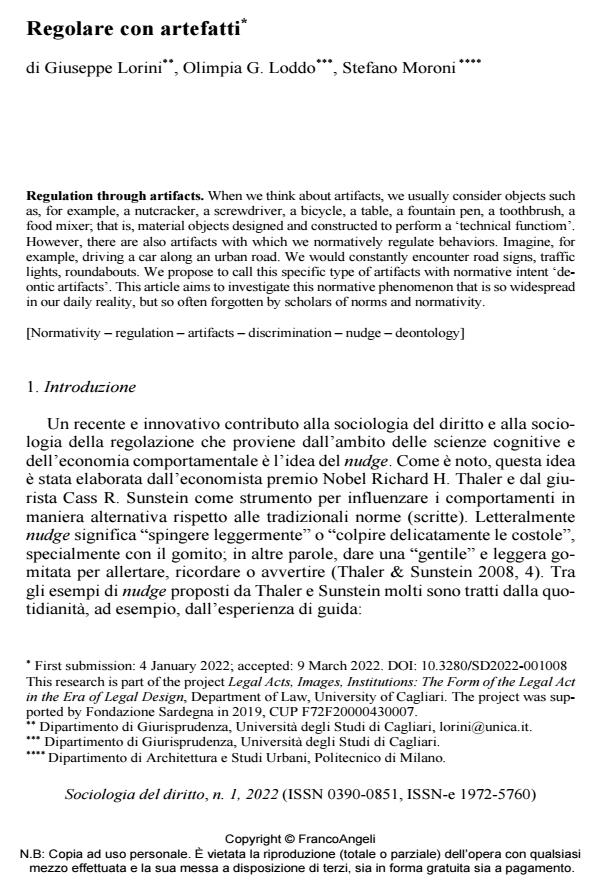Regulation through artifacts.
Journal title SOCIOLOGIA DEL DIRITTO
Author/s Giuseppe Lorini, Olimpia G. Loddo, Stefano Moroni
Publishing Year 2022 Issue 2022/1
Language Italian Pages 22 P. 173-194 File size 231 KB
DOI 10.3280/SD2022-001008
DOI is like a bar code for intellectual property: to have more infomation
click here
Below, you can see the article first page
If you want to buy this article in PDF format, you can do it, following the instructions to buy download credits

FrancoAngeli is member of Publishers International Linking Association, Inc (PILA), a not-for-profit association which run the CrossRef service enabling links to and from online scholarly content.
When we think about artifacts, we usually consider objects such as, for example, a nutcracker, a screwdriver, a bicycle, a table, a fountain pen, a toothbrush, a food mixer; that is, material objects designed and constructed to perform a ‘technical functiom’. However, there are also artifacts with which we normatively regulate behaviors. Imagine, for example, driving a car along an urban road. We would constantly encounter road signs, traffic lights, roundabouts. We propose to call this specific type of artifacts with normative intent ‘deontic artifacts’. This article aims to investigate this normative phenomenon that is so widespread in our daily reality, but so often forgotten by scholars of norms and normativity.
Keywords: Normativity - regulation - artifacts - discrimination - nudge - deontology
Giuseppe Lorini, Olimpia G. Loddo, Stefano Moroni, Regolare con artefatti in "SOCIOLOGIA DEL DIRITTO " 1/2022, pp 173-194, DOI: 10.3280/SD2022-001008